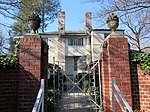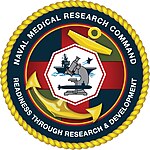Howard Hughes Medical Institute
The Howard Hughes Medical Institute (HHMI) is an American non-profit medical research organization based in Chevy Chase, Maryland. It was founded in 1953 by Howard Hughes, an American business magnate, investor, record-setting pilot, engineer, film director, and philanthropist, known during his lifetime as one of the most financially successful individuals in the world. It is one of the largest private funding organizations for biological and medical research in the United States. HHMI spends about $1 million per HHMI Investigator per year, which amounts to annual investment in biomedical research of about $825 million. The institute has an endowment of $22.6 billion, making it the second-wealthiest philanthropic organization in the United States and the second-best endowed medical research foundation in the world. HHMI is the former owner of the Hughes Aircraft Company – an American aerospace firm which was divested to various firms over time.
Excerpt from the Wikipedia article Howard Hughes Medical Institute (License: CC BY-SA 3.0, Authors).Howard Hughes Medical Institute
Jones Bridge Road,
Geographical coordinates (GPS) Address Phone number Website External links Nearby Places Show on map
Geographical coordinates (GPS)
| Latitude | Longitude |
|---|---|
| N 38.998611111111 ° | E -77.079722222222 ° |
Address
Howard Hughes Medical Institute
Jones Bridge Road 4000
20815
Maryland, United States
Open on Google Maps






